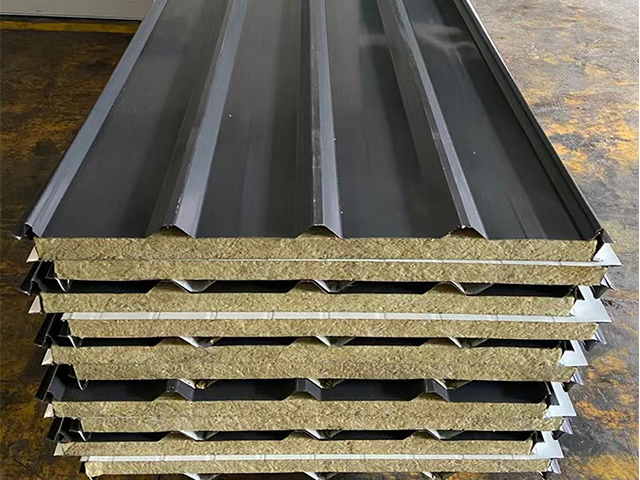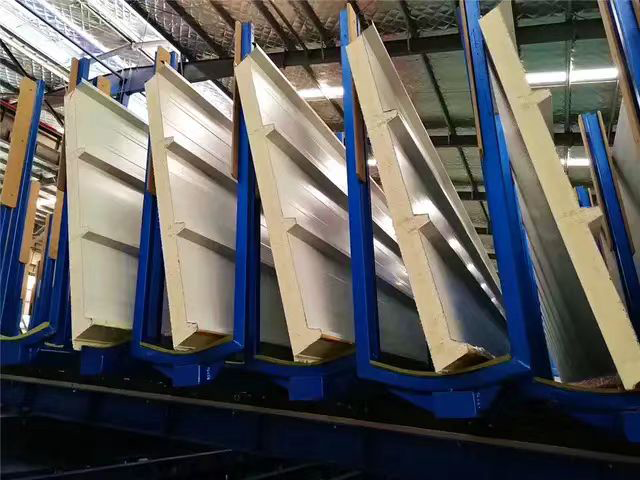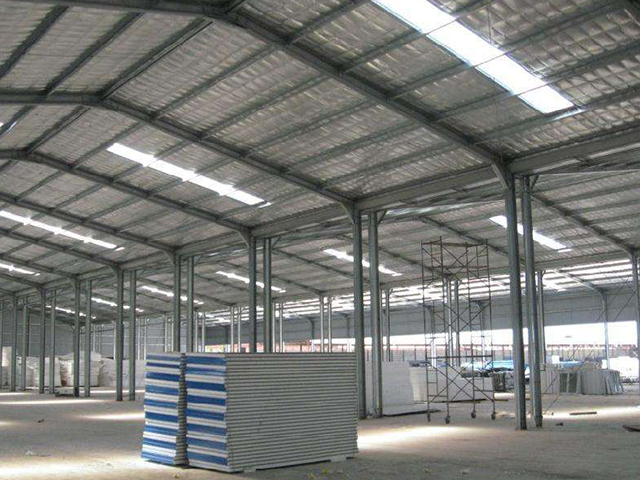Վերջին տարիներին թռչնաբուծության արդյունաբերությունը նշանակալի առաջընթաց է գրանցել նորարարական հավաքարանների շնորհիվ: Շատ ֆերմերներ փնտրում են միջոցներ իրենց գործողությունները արդյունավետ պահելու համար աճող պահանջների պայմաններում՝ թռչնի բարեկեցության չափանիշները չվնասելով: Այս հոդվածը վերլուծում է ժամանակակից հավաքարանների լուծումների վիճակը, տեխնոլոգիաները, որոնք դրանք ավելի արդյունավետ են դարձնում, և ինչու են այդ զարգացումները կարևոր նշանակություն ունենում երկրի թռչնաբուծության ապագայի համար:
Ժամանակակից կոկոսանոց դիզայնների ակնարկ
Ամեն ինչ, ինչը կապված է ժամանակակից հավասարային տների կառուցման հետ, ազդում է թռչունների առողջության վրա և դրանց արդյունավետության վրա: Շնչառական խնդիրների կանխարգելման և ամոնիակի մակարդակը ցածր պահելու համար կարևոր է լավ մեքենայական օդափոխությունը: Ներկայումս ֆերմերները իրենց հավերի համար ավելի լավ կենսական պայմաններ են ստեղծում: Նոր նյութերի, ինչպես օրինակ՝ վերամշակված պլաստմասսաները և բարելավված մեկուսացման տեխնիկաները օգտագործելով, շատերը կառուցում են կառույցներ, որոնք իրենց շրջակա միջավայրին օգուտ են հասցնում այլ ոչ թե վնաս: Ոմանք նույնիսկ անձրևաջրերի հավաքման համակարգեր են ներառում և արեգակնային վահաններ իրենց դիզայններում:
Համարժեք նյութեր և կառուցման տեխնոլոգիաներ
Ներկայումս գյուղատնտեսները հաճախադեպ են դիմում կանաչ շինարարական նյութերի կողմ, երբ կառուցում են իրենց հավաքարանները: Հայտնի ընտրություն են դարձել վերամշակված պողպատը, արագ աճող բամբուկը և բարձր որակի մեկուսացված սալերը: Այդ նյութերը նվազեցնում են թռչնաբուծության արտանետումները տնկային գազերի ձևով՝ միաժամանակ երկարացնելով շենքերի կյանքը և փոխհատուցում փող տաքացման ու սառեցման ծախսերի վրա: Շատ արտադրողներ ընդունել են նաև մոդուլային շինարարության տեխնիկան, որը շատ ավելի պարզ է դարձնում կառույցների արագ կառուցումը և հնարավորություն տալիս է դրանք հարմարեցնել ֆերմայի հատուկ պահանջներին: Որոշ գործողություններ կարողանում են նույնիսկ ընդլայնել իրենց համալիրները անհրաժեշտության դեպքում՝ առանց խորաներ առաջացնելու ամենօրյա գործունեության մեջ:
Խելացի տեխնոլոգիաների ինտեգրումը
Ընդհանուր տեխնոլոգիաների ինտեգրումը արդեն իսկ իրականություն է դառել շատ թռչնաբուծարանների նախագծման գործում: Մենք խոսում ենք ավտոմատ կերի տրուբների, միկրոկլիմայի վերահսկման համակարգերի և տարբեր տիպի հսկողական սարքերի մասին, որոնք հսկում են թռչունների առողջական վիճակից մինչև ֆերմայի աշխատանքի արդյունավետությունը: Այսօր ֆերմերները կարող են հեռակառավարման միջոցով՝ հեռախոսական հավելվածների կամ համակարգիչների միջոցով, կարգավորել կերակրման օպտիմալ ժամերը, փոփոխել ջերմաստիճանի և խոնավության ցուցանիշները և հսկել իրենց թռչնախմբի ընդհանուր վիճակը: Ի՞նչ արդյունքով. ավելի բարձր արտադրողականություն և ամենօրյա ծախսերի նվազում: Ամեն ինչ կախված է ճիշտ որոշումներից, իսկ դրանք հնարավոր են դառնում տվյալների շնորհիվ, որոնք ցույց են տալիս, թե ինչն է ամենալավը յուրաքանչյուր կոնկրետ թռչնախմբի համար:
Համեմատյալ բարեկարգ կանաչ կենդանիների կարգավորումներ
Ներկայումս թռչնաբույժները ավելի մեծ ուշադրություն են դարձնում թռչունների ինքնազգացմանը, ինչը հստակ երևում է այն տնային տնկարանների շինարարության մեջ, որտեղ ապրում են հավերը: Շատ ֆերմաներ այժմ օգտագործում են հատուկ նախագծված հատակներ, որոնք օգնում են կանխել ոտքերի խնդիրները, քանի որ հավերը կարող են հարմարավետ քայլել փոքրիկ թեքություններով, այլ ոչ թե դժվարանալ կամ պայքարել հարթ մակերեսների վրա: Բացի այդ, շատ ֆերմերներ կանոնավոր տրամադրում են թռչուններին արտաքին տարածքներ, որտեղ նրանք կարող են ձգել իրենց թռչկոտները և կատարել անհրաժեշտ ֆիզիկական վարժուքներ: Գիտությունը այս մոտեցումը նույնպես աջակցում է, քանի որ երջանիկ հավերը իրոք ավելի լավ ձու են տալիս և ավելի բարձր որակի միս արտադրում: Ֆերմաների սեփականատերերի համար կենդանիների բարեկեցության խնդիրը այլևս միայն էթիկայի հետ կապված չէ, այլ նաև բիզնեսի տեսանկյունից ճիշտ է, քանի որ հաճախորդները ավելի շատ են պահանջում էթիկական ճանապարհով աճած ապրանքներ:
Ընթացիկ տեսականներ և ապագա պրոեկցիաներ
Տեխնոլոգիան անընդհատ առաջ է գնում, և սա նշանակում է, որ հայտնի փոփոխություններ են սպասվում հավաքարանների կառուցման մեթոդներում: Շատ փորձագետներ կանխատեսում են, որ ավտոմատացումը գյուղատնտեսությունում ավելի տարածված կդառնա, քանի որ թռչնաբուծները փորձում են փոխարինել դրանք ավելի հարմար և արդյունավետ մեթոդներով, որպեսզի փոխարինեն ծախսերը և ապահովեն արտադրության հարթ գործողությունները: Գյուղացիները սկսել են օգտագործել ավտոմատ կերակրման համակարգեր և կլիմայական վերահսկման սենսորներ, քանի որ դրանք ավելի լավ արդյունքներ են տալիս, քան հին մեթոդները: Նույն ժամանակում, մարդիկ, ովքեր ձու և միս են գնում, ավելի շատ հետաքրքրված են սննդի ծագման վայրով: Նրանք ցանկանում են համոզվել, որ կենդանիները արտադրության ընթացքում լավ վերաբերմունքի են ենթարկվել: Կենդանիների բարեկեցության նկատմամբ աճող այս անհանգստությունը իրականում շատ մեծ ներդրում է կատարում ֆերմային շինությունների նախագծման ոլորտում: Ժամանակակից թռչնատները այլևս պարզապես շինություններ չեն: Այդ կառույցները մեր թռչնաբուծության ամբողջ արդյունաբերության հիմքն են, որոնք ապահովում են ճուտերի առողջությունը՝ օգնելով արտադրողներին հասնել ինչպես տնտեսական նպատակներին, այնպես էլ էթիկական չափանիշներին:






